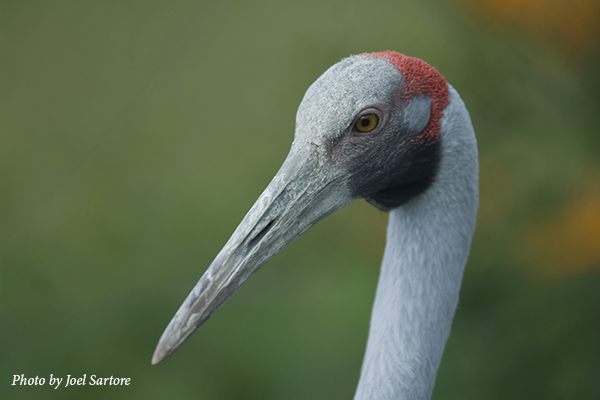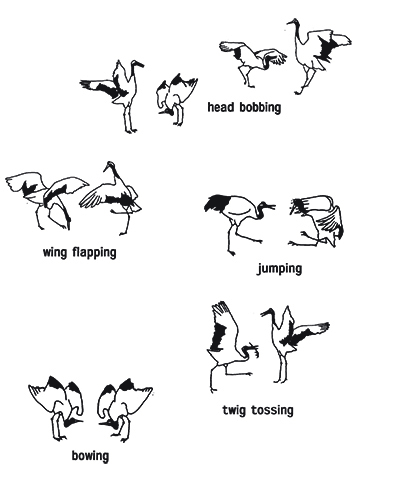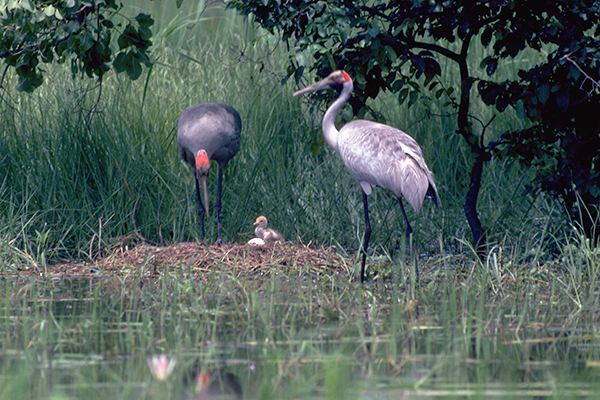[vc_row][vc_column][vc_column_text]Welcome to another exciting edition of Cranetivities! This week we are learning more about our crane friends from down under – the Brolgas! See last week’s edition of Cranetivities here.

Activity Description: Brolgas are only found in Australia and a small region of Papua New Guinea. They are one of the tallest flying birds in Australia, averaging a height of five feet tall! Brolgas got their name from the aboriginal (indigenous people of Australia) language of Gamilaraay, in which they are called burralga. In this activity you will hear the story of how the Brolgas got their name, learn about Brolga behavior and find out how to stay cool this summer, just like the Brolgas.
Grades: 3 to 5
Time estimate: 1 hour
Topics covered: Art, reading and conservation science
Materials needed: Internet connection, for shadow puppets: black construction paper, wooden skewers, tape/glue, scissors and pen
Adult Involvement: Minimal
Indoor or Outdoor: Indoor
Links:
Australian Aboriginal Crane Dance
Brolga Dances and Behavior Video
Work Plan:
Brolgas are one of Australia’s most iconic birds. They are featured in many stories and traditional dances of the aboriginal people. The aboriginal people of Australia have deep connections with the land and animals and base many traditional stories on characters like the emu, kangaroo rat and crane. This story is all about how the Brolgas got their name and why they dance – click here to view.[/vc_column_text][vc_column_text]As stated above, the Brolga’s name comes from the aboriginal language of Gamilaraay. The word for “big” in Gamilaraay is burrul, which relates to the large size of the burralga.
Here, you can learn how to make your own simple shadow puppets to act out your favorite stories at home.
Brolga Behavior
Like all crane species, dancing is a behavior Brolgas use to display joy, to court a mate or defend their territory. The below image depicts some of the dances cranes can do in the wild to communicate with one another. Aboriginal people of Australia base some of their traditional dances on these movements. A video of one of the traditional dances can be seen here.[/vc_column_text][vc_column_text]
Here is a great video about Brolgas dancing and their behavior. As you watch the video, see if you can spot any of the dance moves pictured above.
Can you move like a crane? Try to imitate the moves you see the cranes doing in the video. What is your favorite crane dance move?
Brolgas Beat the Summer Heat
Australia can reach extremely high temperatures of 120 degrees Fahrenheit in the summer. Luckily, Brolgas are specially adapted to survive in the heat. Their behavior and body characteristics allow them to survive Australia’s dry season. They drink and forage in the early mornings and ride hot thermal air currents as the day starts to warm up, which allows them to reach higher elevations where the air is cooler. One of their unique features is their ability to filter saltwater into drinkable freshwater. They excrete the salt from glands behind their eyes. This adaptation allows them to utilize a variety of habitats, like brackish water in desert ponds or saltwater marshes by the sea.

Brolga’s eggs are specially adapted for the heat as well. The eggs are bright white to reflect heat from the sun, while cranes that live in colder environments have darker eggs to help them absorb heat. Brolgas also have a unique incubation process that shades and cools eggs during the hot days rather than keeping them warm, like most other birds. Brolgas will hover over the egg to cast shade while the day is hot and rest on the egg at night to keep it warm.
Stay Cool Like a Brolga matching game: Match the Brolga behavior with the ways people can protect themselves from the summer heat. [/vc_column_text][vc_tta_accordion][vc_tta_section title=”Match these behaviors:” tab_id=”1593116357754-48b50553-5e22″][vc_column_text]Our behaviors:
1. Stay hydrated by drinking lots of water.
2. Stay inside when you can, and go outside in the mornings or evenings when it is cool.
3. Dress in light-colored, loose-fitting clothing.
4. Wear sunscreen, a hat and sunglasses to protect your eyes and skin from the sun.
5. Find some water to play in like a pool, river, lake or even just a water hose.
Brolga behaviors:
A. Brolgas will hover over the egg to cast shade.
B. They drink and forage in the early mornings.
C. They utilize a variety of wetland habitats, like brackish water in desert ponds or saltwater marshes.
D. Their eggs are bright white to reflect heat from the sun.
E. Their ability to filter saltwater into drinkable freshwater.[/vc_column_text][/vc_tta_section][vc_tta_section title=”Answer key:” tab_id=”1593116357787-9e486b2f-4c9f”][vc_column_text]1 and E
2 and B
3 and D
4 and A
5 and C [/vc_column_text][/vc_tta_section][/vc_tta_accordion][vc_column_text]Now that you’ve learned all about Brolgas and how they got their name, how they love to dance and ways they keep cool in the hot summer, you can have some fun coloring this Brolga picture or testing your Brolga knowledge here.
Got feedback? We would love to hear your thoughts on our educational resources. This survey will allow you to provide feedback on our Cranetivities series. If you have used any of our other educational resources, like our From the Field series or our online activity packets, you may provide feedback on those resources here. You may also email us at info@savingcranes.org if you have questions or comments for us, or would like to share photos of you and your kids’ crane creations! We will see you next week for a new edition of Cranetivities![/vc_column_text][/vc_column][/vc_row]
